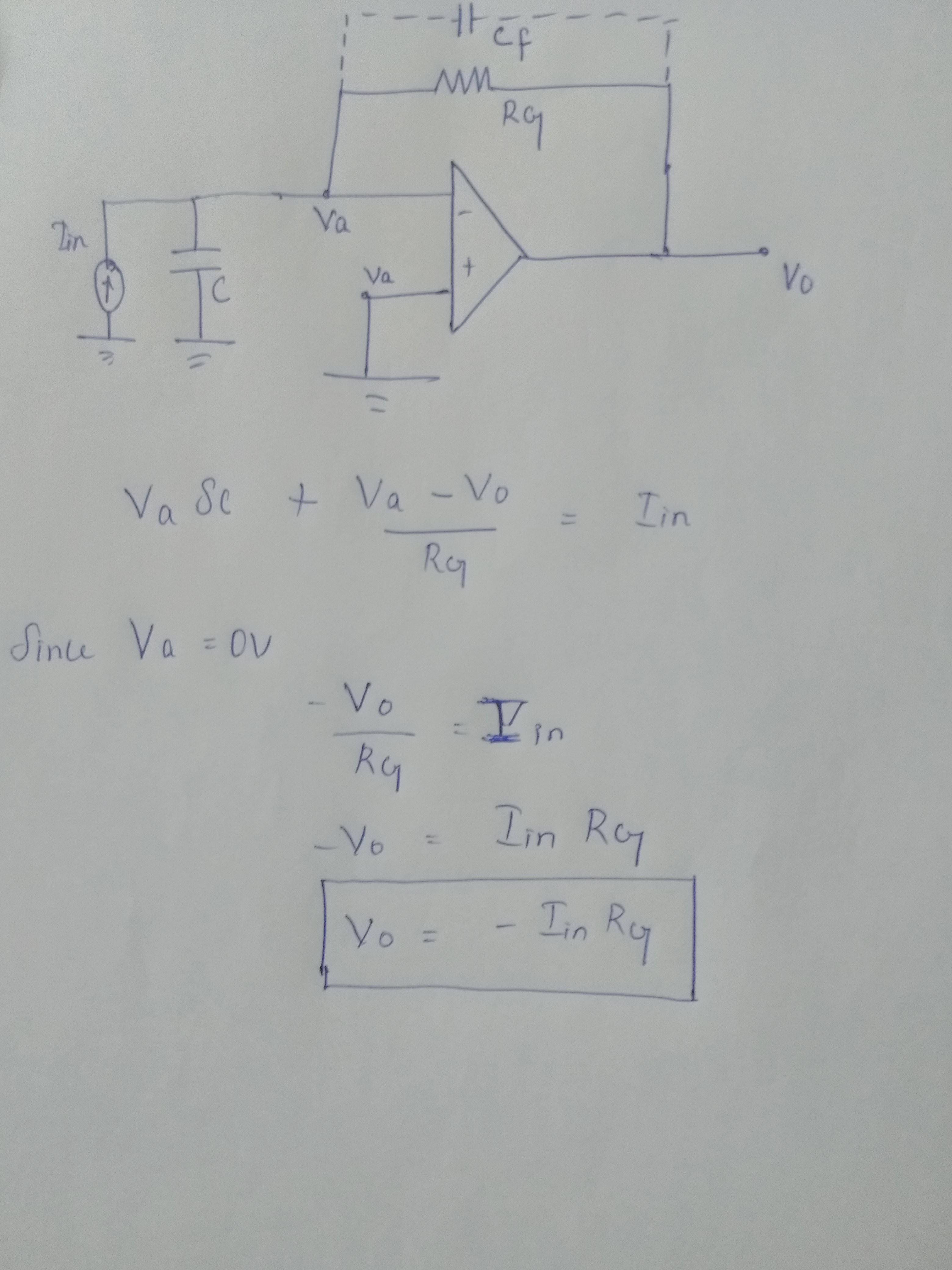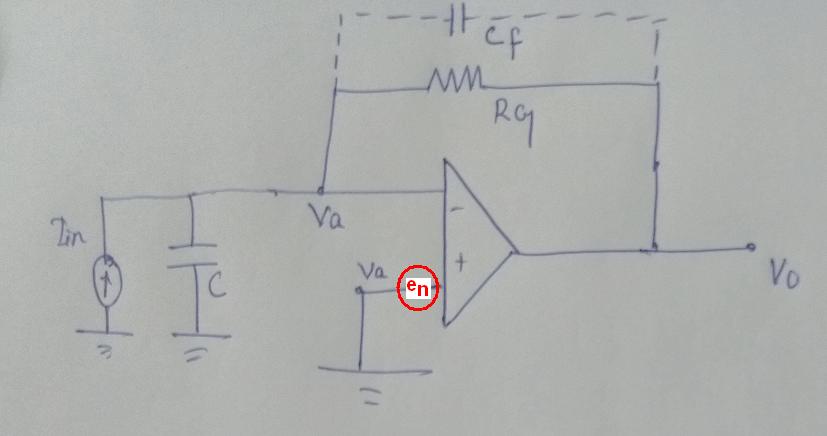I am learning analog design. I am trying to understand transimpedance amplifier using Op-Amp. Here is my transfer function.
My understanding is assuming Node Va as virtual group I got (Vout= -Iin*Rg) which means feedback is frequency independent (No impact because of input Capacitor C). Here what is the purpose of adding a capacitor in feedback path for compensation(adding Zero) since feedback is frequency independent. How to find where to add zero and what value cap to be added? Can someone point to good reading book/website?
Please correct me if my derivation is wrong.


